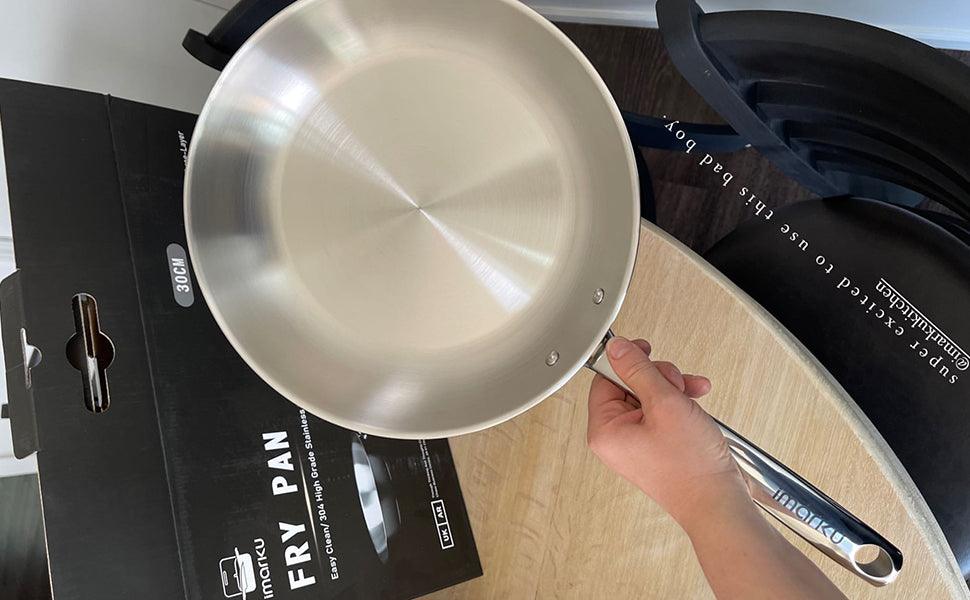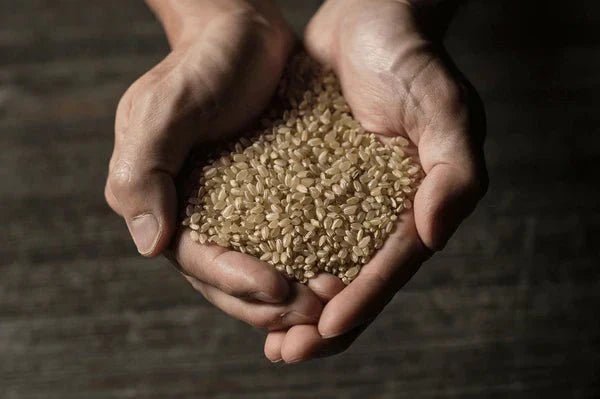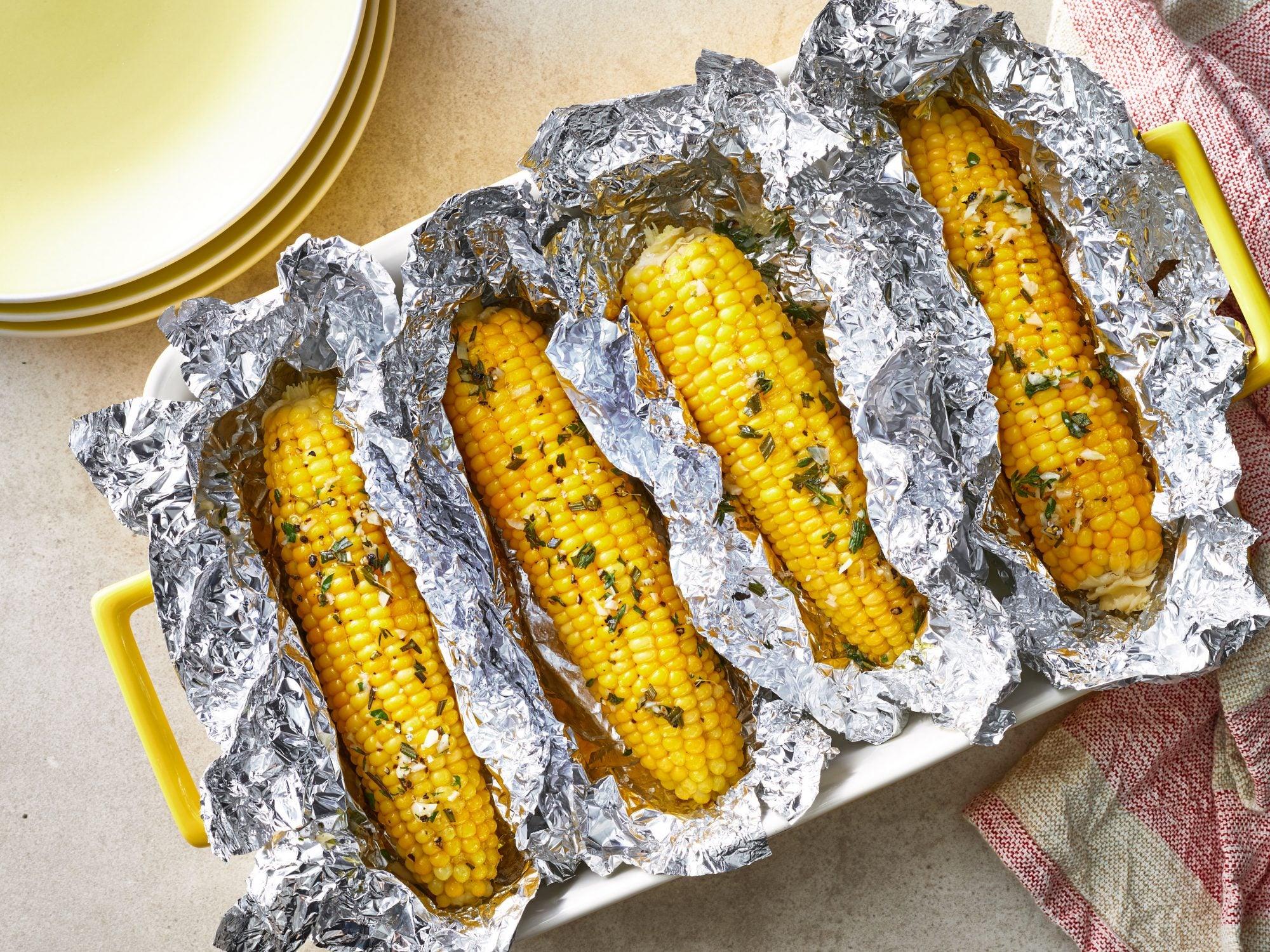TABLE OF CONTENTS
Nonstick pans rarely survive their first trip to the dish pit since the person cleaning them is likely to take a ball of steel wool to them and very quickly ruin their lovely nonstick coating.
Your first tip, which should go without saying, is to avoid scraping away all of the Teflon coatings the first time you clean your brand new pan.
This article will cover the benefits of a good quality nonstick pan and some great tips on how to extend their life. If you are coming to this post in the hopes of finding out whether or not your pan is beyond saving, we will touch on that briefly at the end. All hope may not yet be lost!
The benefits of a good nonstick pan
We (should) all have at least one good quality nonstick pan in our cooking arsenal. They are incredibly diverse and have many benefits that are often overlooked or underappreciated.
Yes, there are the obvious benefits that you can cook food items like fried eggs without them sticking to the pan. But, many people overlook why this is and how else that affects your cooking.
Nonstick pans allow you to massively reduce the amount of fat and oil that is required during the cooking process. Cooking in a nonstick pan can be incredibly beneficial to your health and is encouraged, especially if you are struggling with high cholesterol.
They are also far more cost-effective. The pans themselves are cheaper to produce and purchase than the equivalent cast-iron skillet. They are also far more affordable in the long run since they are both easy to clean and reduce the need to buy fats like oil or butter. Learn more tips on how to choose the best nonstick pan.

First steps to protect your nonstick pan
Just like with a cast-iron pan, when you first bring home your new nonstick pan, it's best to season it before use. When the manufacturer distributes pans, they always pass a strict quality assurance control.
However, this does not mean that they are perfect. They have minor blemishes and imperfections that can negatively affect the pan over time. This could become weak and worn far more quickly or simply provide you with an uneven cooking process.
Different from seasoning a stainless steel pan, the first thing you should season/treat nonstick pan is to wipe it out with a damp paper towel and then pat it. Try again with a different cloth hand towel. This is to remove any dust, grit, or grime that may have attached itself to your pan in its time between leaving the production line and arriving in your kitchen.
Next, you should cover your pan's nonstick surface in a very thin layer of neutral cooking oil, like sunflower oil or canola oil. Lastly, heat the pan on a gentle heat for a few minutes. This can be on the burner or by baking it in the oven.
No less than 2 minutes and no more than 5 is ideal. There is no perfect number so don't worry about it too much. Then, wipe the pan out with paper towels until it's completely dry. You're ready to go! This will have removed any imperfections in the Teflon coating before you go to cook your first meal. This process only takes a few minutes but can add years to your pan if you take continually good care of it.

Extra precautions to extend the life of your nonstick pan
Once you have taken the proper precautions to treat your brand new nonstick cookware, you are ready to start cooking. That means you must consider every aspect of your pans life both during and after the cooking process.
Here are a few extra tips to ensure that you maximize the life of your nonstick pan. They won't allow your pan to live forever. But, you can get much more out of them than you would otherwise.
When Cooking
First, avoid cooking on high heat. The benefits of cooking on high heat, from a culinary perspective, are entirely mitigated by the use of a nonstick pan anyway. You will not get as much of a sear nor will your food items caramelize in the same way.
This is not to say you cant sear food or caramelize it. It's just a slightly different process achieved from the length of cooking more than intensity. High heat can wear down the nonstick coating over time, eventually making it almost redundant. If your nonstick becomes so worn it doesn't stop sticking, you may as well use a different type of pan.
When Cleaning
After the cooking comes everyone's favorite step, the cleaning! As mentioned in the first few opening lines. Do not use steel wool on your nice new pans! It will scratch away the coating and destroy your pan. Use a sponge, with only a slightly rough surface at most, to clean your pans gently.
If you scratch away the surface, you will lose your nonstick features, but your food will cook unevenly. Additionally, the coating will begin to come off in your food, and you may find yourself chowing down on some Teflon flakes. Delightful!
When Storing
Storing these types of pans is one of the more overlooked steps of the cooking process. Stacking nonstick pans on top of each other can cause the bottom of one pan to rub on the nonstick coating of the pan below it. Just like how the steel wool would begin to wear away the nonstick surface, so will your other pans.
There isn't much friction between pans stored in your cupboard, but it's enough to do the damage needed to render them useless. There are two great alternatives for nonstick pan owners.
First, hang your pan from a hook. This avoids any contact and allows you to display your lovely pans. If this isn't an option, consider purchasing foam mats that sit between your pans to reduce friction and increase padding. A kitchen towel works just fine for this too.

Is it too late to save my nonstick pan?
Your pans won't last forever. They aren't designed the same as cast-iron skillets, which, theoretically, can last your entire lifetime. You will be lucky to get 5-7 years out of them at most. While a slightly worn pan isn't going to perform as well as a brand new one, it doesn't mean it's useless.
When the time to finally throw out your old pan comes, it will be because of one of these few things. It has begun to warp and lose its shape entirely, and this is a sign that it's structurally unsound and is likely to break sooner rather than later.
If the nonstick surface comes off when you cook or clean it, throw that pan out immediately! Lastly, and more subtly, if your pan's coating begins to lose its coloring, there is a chance it's starting to wear off without you noticing.
Just because it's not coming off in big flakes doesn't mean it's not coming off. However, that doesn't mean your pan has lost all hope. You can purchase a variety of nonstick repair sprays which can offer a temporary coating to your pan and extend its life slightly.
This is a short-term fix, there will reach a point where spraying your pan simply doesn't work anymore. But, to squeeze a few more months out of your favorite nonstick pan, this is an excellent solution.
These sprays only work on pans with minor wear! If the coating of your pan comes off in chunks, then spraying it with the nonstick repair is like putting a band-aid on the hole in the hull of your sinking boat. It's not going to do much good, even if it makes you feel a little better.
Summary
Hopefully, this article has given you a little more insight into the steps you can take to improve the life of your nonstick pans. They may have a reputation for only lasting a year or so, but that isn't always the case as you can now see.
Just as you will find with most equipment in your kitchen - the better care you take of it the longer it will last. It only requires making a few small changes to the way you use your pans to multiply their life expectancy by 100% to 200%. A pretty good return on investment, if you ask me.






















Leave a comment
All comments are moderated before being published.
This site is protected by hCaptcha and the hCaptcha Privacy Policy and Terms of Service apply.